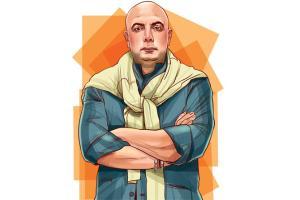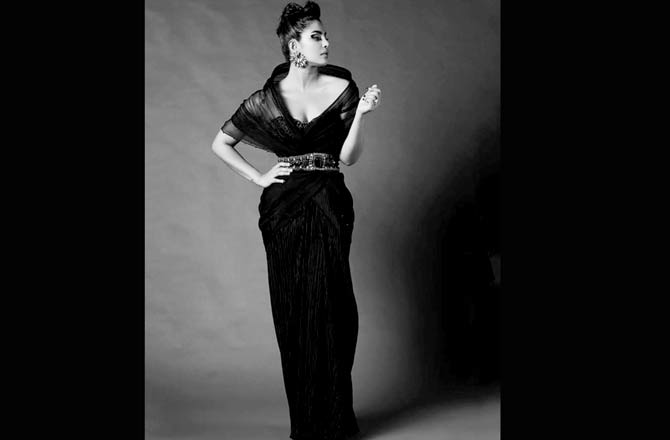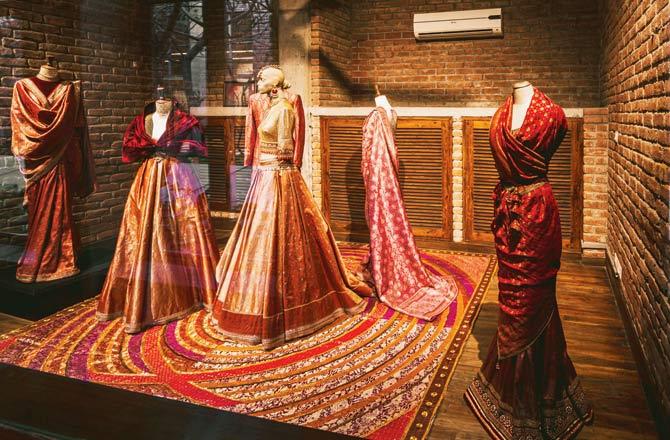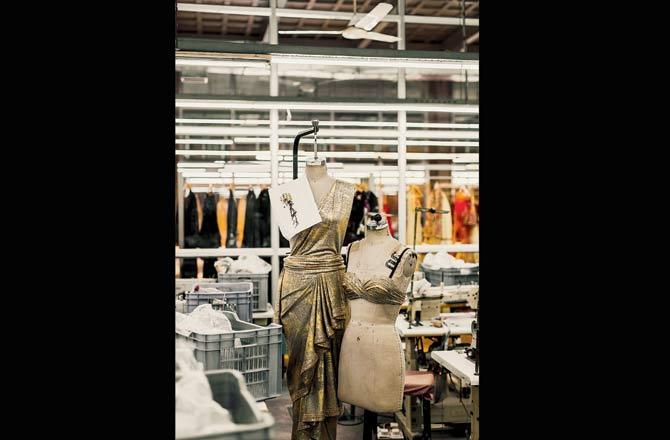Tarun Tahiliani's brand of India Modern defined drapes turns 25 this year, but instead of gloating in his sartorial past, the designer makes a strong case for a solution-driven present.

Illustration/Uday Mohite
There are many designers who can make women look thinner or prettier. Tarun Tahiliani seems to have the ability to make them appear more interesting. This month it will be 25 years since the 57-year-old designer launched his eponymous brand in 1995, but he seems decidedly casual about the legacy. "Legacy is too pretentious a word. I hope our best work is yet to come. Introducing new ways of wearing things is a legacy, emulating the past is not," he says.
TT, as Tahiliani is known in the industry, is much more than just a designer or a brand. He is an institution within himself.
ADVERTISEMENT

Priyanka Chopra Jonas wearing Tarun Tahiliani's three-piece, corset saree with pleating and sheer silk sculpted collar at a fashion show in the city recently. Pic courtesy/Tarun Tahiliani
Tahiliani founded Ensemble, India's first multi-designer boutique in 1987 with his wife Sailaja and the late designer Rohit Khosla. Three years after opening Ensemble in Mumbai, and barely a year into launching his design studio, Tahiliani left for New York in 1991 to pursue a course at the Fashion Institute of Technology. "I wanted to learn to cut and drape; back then nobody could. They could barely make a sleeve in India," he explains. Tahiliani returned to India, but chose to settle in New Delhi instead of Mumbai, a city where he grew up. "I felt it [Delhi] was a little more Indian, as you know I am not very Bollywood centric. I like the seasons, I also like culturally what happens here, and we work a lot with the craft belt in Uttar Pradesh and Rajasthan as well."
His first real challenge was more prosaic. "It was initially difficult to explain the concept of pattern-cutting or draping a stitched garment to the tailors, because they were all male," he says in between deep laughs. Structured draping began in earnest in 1995; its outline and purpose further probed, polished by brand-defining collections such as the New Democrazy (2010), Kumbh (2013) and Kutch (2016). "I think all great design studios find solutions based on what people need or what you are trying to do at that moment. And that's how structured draping and lightweight couture began for us, focused on fit and comfort. If I wanted a churidar style, replacing the nada [string] in favour of a zipper was the logical thing to do. Same with the petticoat. Everything is driven by the idea of fit, and we like fit," he adds.

The New Brocade tableaux photographed in Tahiliani's factory in Gurugram
To appreciate what continues to make Tahiliani a relevant designer, two-and-a-half decades on, you first need to understand his India Modern design identity—an exuberant dance between the present and India's heritage of draped form and tradition of artistry. It's what keeps the "cooler" consumer interested. "Having your individual style does not mean you have to be excessively Western or excessively Indian. There's got to be the real thing. Unless designers can provide that, who is going to do it?"
As it happens, there is nothing new about the Indian drapes that frame a body into an hourglass, yet Tahiliani was a modernist in the way he looked at women's figures. Where corsetry, instead of a choli, created a static, airless ideal of a womanly shape, Tahiliani worked with seams, stretch and drape to put India Modern right into fashion. He is also the designer who scandalised the saree's "graceful decorum" when he spoke in favour of Priyanka Chopra Jonas and the actor's choice to wear his garment—a sequin, gota and Swarovski saree—without a blouse on the 2019 July cover of InStyle. "There's nothing vulgar. In fact, not using a choli makes it a global statement," he had said.

A blend of bonding, fusing and draping creates the classic TT saree gown
Now, on the verge of the next quarter-century, Tahiliani's approach is a kind of hyperrealism: "I don't want to change for the sake of changing." The plans for next 25 years are more broad-based, he says, alluding to the launch of the ready-to-wear pieces. "We're a classic brand, and within that, we want to create accessible clothing line with our collective knowledge of the India Modern drapes and structure. Here, a tad of embroidery is enough."
Debut show
It was in 1987 when Ensemble opened in Mumbai. "A bunch of us including Rohit Khosla, Abu Jani, Sandeep Khosla, Sunita Kapoor and I hosted a salon couture show, each one taking turns to showcase a range of six outfits at 10-minute intervals. We were all slightly prudish, and even scandalised since we had never been backstage before. The show was in March and the air-conditioners had started failing… Seeing me nervous, Rohit handed a compose pill to calm my nerves [laughs]. Anil Kapoor [whose wife Sunita was one of the designers at the show] couldn't get in through the traffic jam that had clogged the streets outside the store. We must have been mad, when I think about it. We were just a few babes in the woods," says Tahiliani.
Of Drape & Brocade
The disciplined drapes
It was sometime between 1992 and 1993, that we first introduced the chotu saree, but we never took credit for it. It wasn't ours to claim. Everyday I'd drive to work, and see Maharashtrian women in a saree with their hemline pulled up; it simply made chores like walking or using the lavatory less burdensome. It all starts with Indian drapes, and within that, we have created versions that represent India in a very modern way, like the structured sarees, draped dhoti trousers, saree gowns, or sarees teamed with jewelled T-shirts. The structured drape in jersey with a tailored gilet is my standard concept saree; it's a choli and it's a saree, but there's no mixing, no pleating, and it has freed a lot of women.
The new brocade
It's not that I don't like handloom textiles, but in most cases like the brocade, the fabric is rather thick, which adds to the stiffness of the outfit. It takes years of wash-and-wear for the brocade to achieve certain lightness, and that dull look. We started developing our line of brocades five years ago, where we treat them to industrial methods of pre-distressing, a lot like your pre-washed jeans. And it has worked. I love the dullness of it. Our fall/winter occasion wear line features a bodysuit in brocade drape, while the pockets and cinched waist gives it a nice fit. We also have a long duster jacket with cigarette trousers in brocade, available with an optional tie and belt—you can wear this to a wedding, a garden lunch or to a nice dinner.
Catch up on all the latest Mumbai news, crime news, current affairs, and also a complete guide on Mumbai from food to things to do and events across the city here. Also download the new mid-day Android and iOS apps to get latest updates
 Subscribe today by clicking the link and stay updated with the latest news!" Click here!
Subscribe today by clicking the link and stay updated with the latest news!" Click here!







